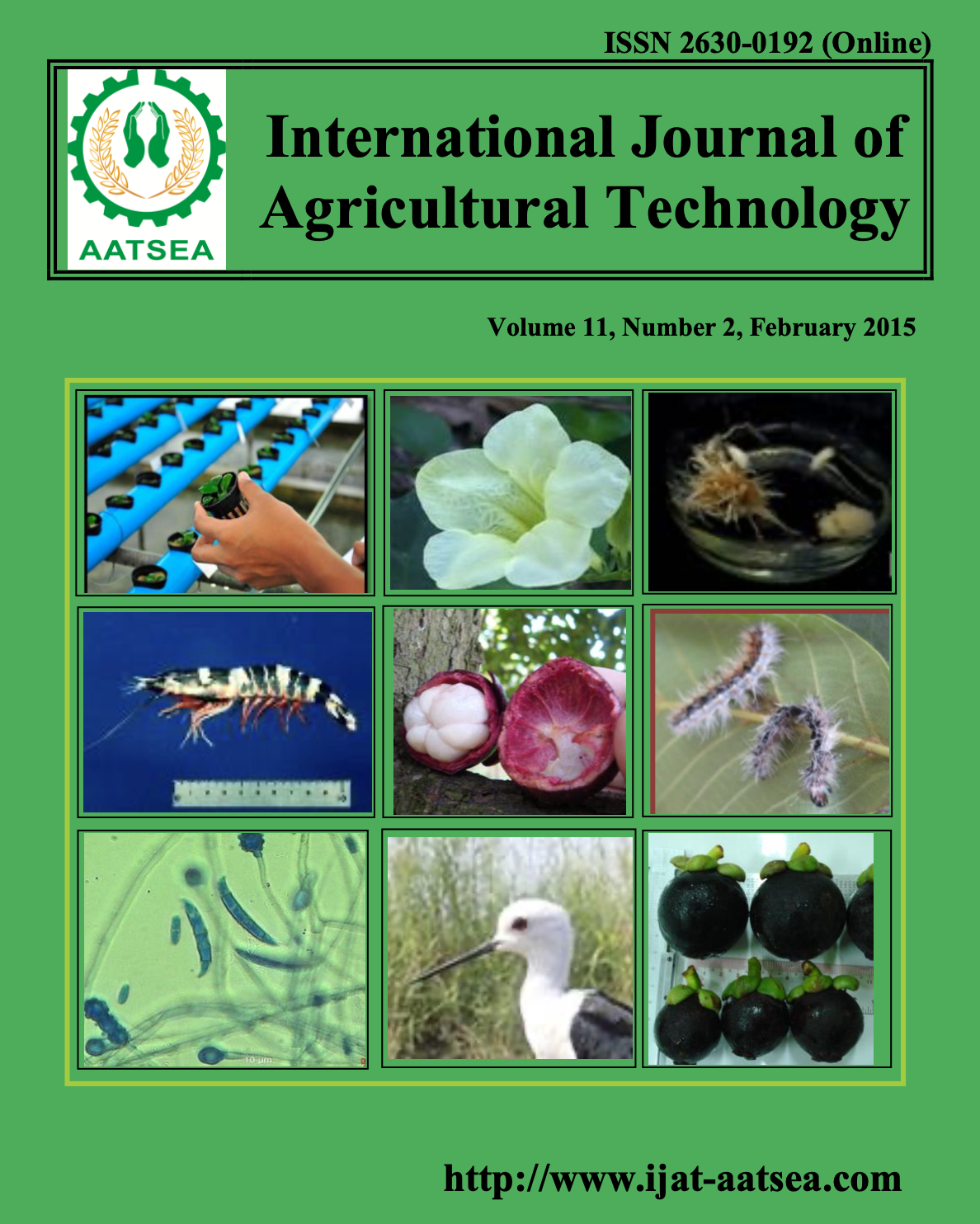Isolation and identification of Trichocomaceae from soil by morphology and three regions DNA sequencing
Main Article Content
Abstract
The Trichocomaceae contains some of the most familiar fungi, such as Penicillium and Aspergillus. This family is cosmopolitan in distribution, ubiquitous in soil communities and extremely common associates of decaying plant materials and food stuffs. The objectives of this work were to isolate and identify varieties of Trichocomaceae mainly based on the morphological and molecular characteristics. The samples were isolated from soil collected in Chiang Mai’s forest, Thailand. These fungi have been partially characterized using morphological traits such as features of colony morphology, size and shape of ascospores that were grown on potato dextrose agar (PDA) at 25°C. The three regions: ITS, β-tubulin and calmodulin were amplified using the primers that was a unique fragment of approximately 550, 450 and 650 bp, respectively. The nucleotide sequences demonstrated the level of genetic diversity of Trichocomaceae and related to the two genera: Talaromyces flavus (EU02, EU03, EU07, EU12 and EU14), Talaromyces trachyspermus (EU10 and EU23), Neosartorya hiratsukae (EU06) and Neosartorya pseudofischeri (EU13). However, a new classification system including both anamorph and teleomorph species will be investigating the relationship of some genera of Trichocomaceae.
Article Details

This work is licensed under a Creative Commons Attribution-NonCommercial-NoDerivatives 4.0 International License.
References
Alexopoulos, C. J., Mims, C. W. and Blackwell, M. (1996). Introductory Mycology. New York: John Wiley and Sons.
Balajee, S. A., Gribskov, J., Brandt, M., Ito, J., Fothergill, A. and Marr, K. A. (2005). Mistaken identity: Neosartorya pseudofischeri and its anamorph masquerading as Aspergillus fumigatus. Journal of Clinical Microbiology 43:5996-5999.
Domsch, K. and Gams, W. (1993). Compendium of Soil Fungi. Vol.1. IHW-Verlag, Germany. pp. 859.
Guarro, J., Esper G. K., Patricio G., Anna, K., Josepa G., Alberto, S. and Arnaldo, L.C. (2002). Cerebral Aspergillosis caused by Neosartorya hiratsukae, Brazil. Journal of Emerging Infectious Diseases 8:989-991.
Hawksworth, D. (2009). Separate name for fungus’s sexual stage may cause confusion. Nature 458:29.
Houbraken, J. and Samson, R. A. (2011). Phylogeny of Penicillium and the segregation of Trichocomaceae into three families. Studies in Mycology 70:1-51.
Hubka, V. and Kolarik, M. (2012). β-tubulin paralogue tubC is frequently misidentified as the benAgene in Aspergillus section Nigri taxonomy: primer specificity testing and taxonomic consequences. Persoonia 29:1-10.
Kirk, P. M., Cannon, P. F., Minter, D.W. and Stalpers, J. A. (2008). Dictionary of the Fungi (10thed.). Wallingford, UK. pp. 248.
Peterson, S. W. (2008). Phylogenetic analysis of Aspergillus species using DNA sequences from fourloci. Mycologia 100:205-226.
Samson, R. A., Yilmaz, N., Houbraken, J., Spierenburg, H., Seifert, K.A., Peterson, S. W., Varga, J. and Frisvad, J. C. (2011). Phylogeny and nomenclature of the genus Talaromyces and taxa accommodated in Penicillium subgenus Biverticillium. Studies in Mycology 70:159-183.
Soytong, K. (1992). Antagonism of Chaetomium cupreum to Pyricularia oryzae. Journal of PlantProtection in the Tropics 9:17-23.
Webster, J. and Weber, R. W. S. (2007) Introduction to Fungi. Cambridge, UK: Cambridge University Press.
White, T. J., Bruns, T., Lee, S. and Taylor, J. (1990) Amplification and direct sequencing of fungal ribosomal RNA genes for phylogenetics. In M. A. Innis, D. H. Gelfand, J. J. Sninsky & T. J. White (Eds.), PCR Protocols: a guide to methods and applications. Academic Press. pp. 315-322.
Yazdani, D., Ahmad, Z. A. M., How, T. W. and Qaderi, A. (2011). Isolation and identification of Eurotium species from contaminated rice by morphology and DNA sequencing. International Journal of Molecular and Clinical Microbiology 1:97-102.


